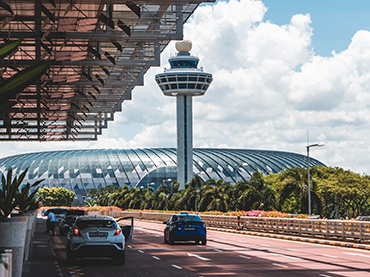Transport Safety Investigation Bureau Preliminary Investigation Findings of Incident Involving SQ321
1. The Transport Safety Investigation Bureau of Singapore (TSIB) has extracted the data stored in the flight data recorder (FDR) and cockpit voice recorder (CVR) of flight SQ321.
2. The investigation team comprises TSIB investigators and United States representatives, from the National Transportation Safety Board (NTSB), Federal Aviation Administration (FAA) and Boeing.
3. The investigation team has compiled a chronology of events based on preliminary analysis of the data from FDR and CVR:
a. SQ321 departed London on 20 May 24 and the flight was normal prior to the turbulence event. At 07:49:21 hr (UTC) on 21 May 24, the aircraft was passing over the south of Myanmar at 37,000 ft and likely flying over an area of developing convective activity. The Gravitational force (G), recorded as vertical accelerations, fluctuated between positive (+ve) 0.44G and +ve 1.57G for a period of about 19 sec. (This would have caused the flight to begin to experience slight vibration).
b. Around the same time as the onset of the slight vibration, an uncommanded increase in aircraft altitude, reaching a peak of 37,362 ft, was recorded. In response to this uncommanded altitude increase, the autopilot pitched the aircraft downwards to descend back to the selected altitude of 37,000 ft. In addition, the pilots observed an uncommanded increase in airspeed which they arrested by extending the speed brakes. While managing the airspeed, at 07:49:32 hr, it was heard that a pilot called out that the fasten seat belt sign had been switched on.
c. This uncommanded increase in aircraft altitude and airspeed mentioned in (b) are most likely due to the aircraft being acted upon by an updraft (the upward movement of air). The autopilot was engaged during this period.
d. At 07:49:40 hr, the aircraft experienced a rapid change in G as recorded vertical acceleration decreased from +ve 1.35G to negative (-ve) 1.5G, within 0.6 sec. This likely resulted in the occupants who were not belted up to become airborne.
e. At 07:49:41 hr, the vertical acceleration changed from -ve 1.5G to +ve 1.5G within 4 sec. This likely resulted in the occupants who were airborne to fall back down.
f. The rapid changes in G over the 4.6 sec duration resulted in an altitude drop of 178 ft, from 37,362 ft to 37,184 ft. This sequence of events likely caused the injuries to the crew and passengers.
g. In the midst of the sequence of rapid changes in G, recorded data indicated that the pilots initiated control inputs to stabilise the aircraft, disengaging the autopilot in this process. The pilots manually controlled the aircraft for 21 sec and reengaged the autopilot at 07:50:05 hr.
h. The recorded vertical acceleration showed more gradual fluctuations over the next 24 sec, ranging from +ve 0.9G to +ve 1.1G, while the aircraft returned to 37,000 ft at 07:50:23 hr.
i. After the pilots were informed by the cabin crew that there were injured passengers in the cabin, the decision was made to divert to Suvarnabhumi Airport, Bangkok, Thailand. On the way to Bangkok, the pilots requested for medical services to meet the aircraft on arrival.
j. Approximately 17 minutes after the turbulence event, at 08:06:51 hr, the pilots initiated a normal, controlled descent from 37,000 ft and the aircraft reached 31,000 ft at 08:10:00 hr. The data showed that the aircraft did not encounter further severe turbulence during this diversion, and touched down in Suvarnabhumi Airport at 08:45:12 hr.
4. Investigations are ongoing.
